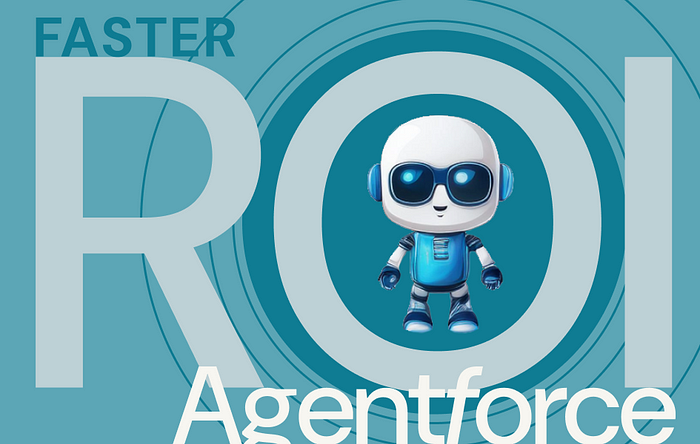Maximizing ROI with Agentforce: Metrics and KPIs to Watch
Salesforce’s Agentforce is revolutionizing customer experience by enabling businesses to deploy intelligent, autonomous agents powered by AI. These agents can perform tasks ranging from customer support and lead qualification to workflow automation and predictive insights. However, as with any significant technological investment, organizations need to measure their return on investment (ROI) effectively to ensure Agentforce is delivering tangible business value.

Understanding ROI in the Context of Agentforce
Return on investment with Agentforce isn’t limited to cost reduction. While automation often leads to savings in time and labor, ROI also includes improvements in customer satisfaction, faster resolution times, enhanced decision-making, and increased sales conversions. A comprehensive ROI assessment involves both quantitative and qualitative measures.
Also Read this blog- Salesforce AI Strategy Unveiled: The Power of Agentforce and Beyond
Key Metrics and KPIs to Monitor
- Customer Satisfaction (CSAT)
- Track CSAT scores to evaluate how customers perceive interactions with AI agents. Improved satisfaction often correlates with quicker, more accurate resolutions and consistent service quality.
2. First Contact Resolution (FCR)
- Measure how often customer issues are resolved during the first interaction. High FCR rates signal the efficiency and effectiveness of Agentforce-powered interactions.
3. Average Handling Time (AHT)
- Monitor how long it takes to complete tasks or resolve issues. A decrease in AHT typically reflects well-optimized workflows and effective use of AI assistance.
4. Agent Utilization Rate
- Evaluate how much of the workload is being handled by Agentforce versus human agents. A balanced utilization can help optimize resources and reduce operational costs.
5. Lead Conversion Rate
- For sales teams, measure the percentage of leads converted into customers with the help of Agentforce. Intelligent automation can speed up response times and qualify leads more effectively.
6. Operational Cost Savings
- Calculate savings derived from reduced manual labor, fewer escalations, and improved efficiency. This directly reflects the cost-effectiveness of deploying Agentforce.
7. Time to Resolution
- Track the average time taken to resolve issues. A lower time to resolution generally leads to happier customers and better retention.
8. Escalation Rate
- Keep an eye on how often issues are passed on from AI to human agents. Lower escalation rates may indicate the increasing capability and reliability of Agentforce agents.
Enhancing ROI Through Best Practices
- Continuous Training and Optimization: Regularly update AI models with new data and feedback to improve performance and relevance.
- Hybrid Workforce Strategy: Combine the strengths of AI agents with human expertise to deliver superior service.
- Performance Dashboards: Use real-time dashboards to monitor KPIs and make data-driven decisions.
- Customer Feedback Integration: Leverage feedback to fine-tune agent behavior and workflows.
Conclusion
Agentforce presents a powerful opportunity to drive operational excellence and elevate customer engagement through AI. By identifying and tracking the right metrics, organizations can not only justify their investment but also continuously refine their strategies to get the most out of this cutting-edge technology. In the age of intelligent automation, success is measured not just by what you implement, but by how well you measure and improve it.
Comments
Post a Comment